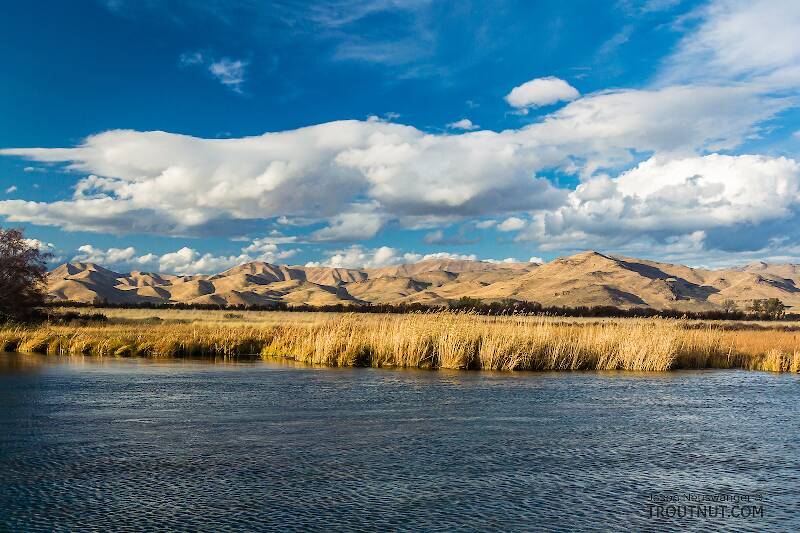
Blue-winged Olives
Baetis
Tiny Baetis mayflies are perhaps the most commonly encountered and imitated by anglers on all American trout streams due to their great abundance, widespread distribution, and trout-friendly emergence habits.


Mayfly Species Procloeon mendax (Tiny Sulphur Duns)
Species Range
Physical description
Most physical descriptions on Troutnut are direct or slightly edited quotes from the original scientific sources describing or updating the species, although there may be errors in copying them to this website. Such descriptions aren't always definitive, because species often turn out to be more variable than the original describers observed. In some cases, only a single specimen was described! However, they are useful starting points.
Male Spinner
Wing length: 6-6.5 mm
Abdominal tergites 2-6 of male imago pale ferruginous; legs pale.
Antennal filament fuscous, pale at the tip. Head and thorax pale ferruginous; thoracic sternum pale greenish hyaline. Legs pale, the tips of the tarsi cloudy. Wings hyaline, venation hyaline. Abdominal tergites 2-10 pale ferruginous. Sternites pale greenish hyaline, the posterior segments opaque. Genitalia as in fig. 168.
This species may be distinguished from C. ingens (now a synonym of Procloeon ingens) and C. implicatum (now a synonym of Procloeon ingens) by its smaller size and ferruginous rather than olive brown abdominal tergites. In other species of which the male is known, abdominal tergites 2-6 are pale whitish or yellowish, not ferruginous.
Start a Discussion of Procloeon mendax
References
- Caucci, Al and Nastasi, Bob. 2004. Hatches II. The Lyons Press.
- Needham, James G., Jay R. Traver, and Yin-Chi Hsu. 1935. The Biology of Mayflies. Comstock Publishing Company, Inc.
Mayfly Species Procloeon mendax (Tiny Sulphur Duns)
Species Range
Common Name
Resources
- NatureServe
- Integrated Taxonomic Information System
- Global Biodiversity Information Facility
- Described by Walsh (1862)

